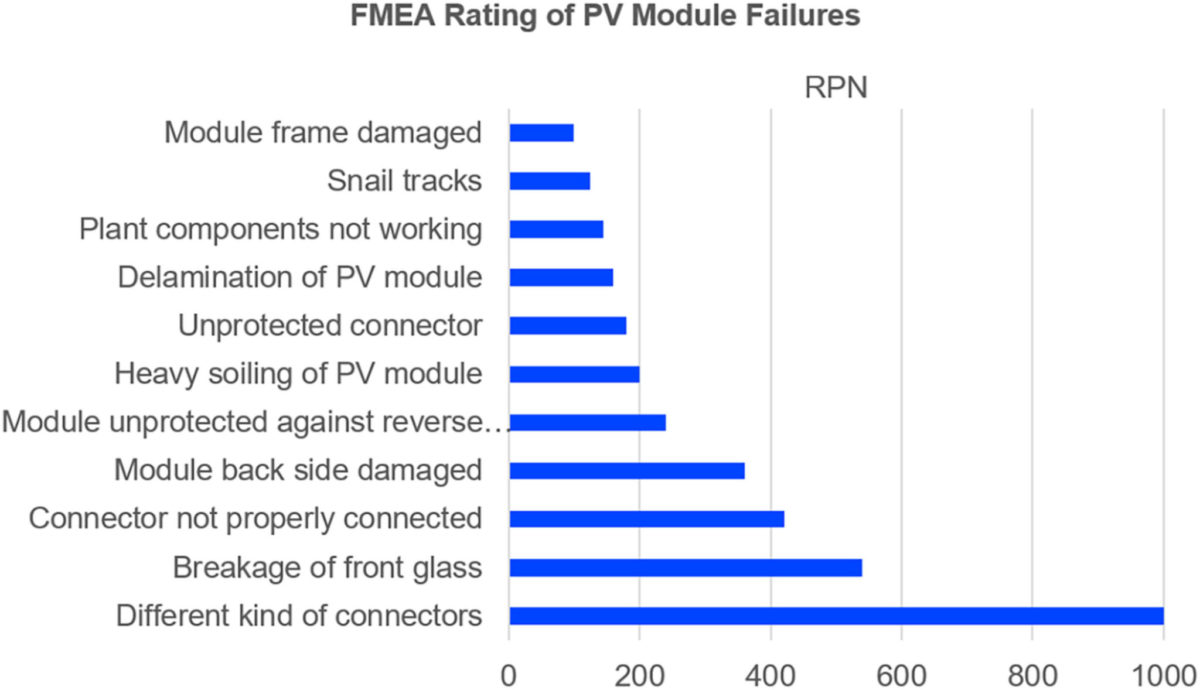From pv magazine Global
A group of scientists led by German standards body TÜV Rheinland has compiled an extensive review presenting all semi-quantitative and quantitative methodologies that are used to assess technical risks in PV systems.
The researchers based their analysis on three methods that are commonly used to quantify the impact of technical risks. They considered failure modes and effects analysis (FMEA), which is a tool used to determine the effect of each module failure on system operation, in order to identify and implement corrective actions. They also considered reliability, availability and maintainability (RAM) analysis, which is an engineering tool used to address operational and safety issues in systems. In addition, the researchers adopted the cost priority number (CPN) approach by using the metric CPN, expressed in euros per kilowatt per year, instead of the risk priority number (RPN), which is a numeric assessment, generally used in FMEA, of risk assigned to a process.
The academics created a risk database covering the range of affected components, the description of causes and consequences, failure rates, the probability of occurrence, the impact on key performance indicators (KPIs), and the recommended control and mitigation actions.
“It should be updated and maintained as a growing data hub through all phases of the project,” they said.
They also used the Trust-PV Risk Matrix, which is a standardised taxonomy to improve and standardise the categorisation and the readability of operation and maintenance (O&M) tickets, to describe 30 examples of common technical risks. These examples were then included in newly developed PV failure fact sheets (PVFSs).
“The risk matrix covers all failures and events in the operational phase of a PV plant and is subdivided according to components, subcomponents and individual events/failures,” the scientists said.
They outlined their review in “Identify, analyse and mitigate – Quantification of technical risks in PV power systems,” which was recently published in Progress in Photovoltaics. They said they aim to increase the knowledge of methodologies to assess technical risks and mitigation measures, in order to investigate the most important risks by collecting case studies and updating the database with the acquired information.
“With the knowledge acquired and data collected, the risk and cost-benefit analysis was demonstrated in one case study that showed methods for prioritizing decisions from an economic perspective and provided important results for risk managing strategies,” they explained. “However, providing an overview of quantification methods, we draw the conclusion that more standardization is required.”
This content is protected by copyright and may not be reused. If you want to cooperate with us and would like to reuse some of our content, please contact: editors@pv-magazine.com.



